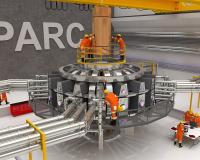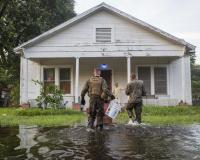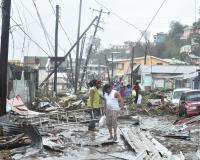
Vibrant Environment
Climate Change And Sustainability
All | Biodiversity | Climate Change and Sustainability | Environmental Justice | Governance and Rule of Law | Land Use and Natural Resources | Oceans and Coasts | Pollution Control

“April showers bring May flowers,” the saying goes – but we also rely heavily on groundwater. In honor of the changing seasons, Vibrant Environment recounts a tale from The Environmental Forum of neighborhood water woes.
* * *

A research group at MIT says nuclear fusion is within years of being commercially viable. And a European project, the International Thermonuclear Experimental Reactor (ITER), is also aggressively moving toward development of nuclear fusion power. Is this the dawn of a new nuclear age—safe, sustainable energy from nuclear fusion?

“Anti-environmentalism is a mark of identity,” says Fred Rich, author of Getting to Green: Saving Nature: A Bipartisan Solution. “It is a mark of what it is to be a conservative.” With fossil fuel companies continuing to fund GOP politicians and a president who has called global warming a “hoax,” there are legitimate concerns that environmental issues will continue to polarize. The Republican 2016 Party platform described the United Nations’ Intergovernmental Panel on Climate Change as “a political mechanism,” rejecting the “agendas” of the Kyoto Protocol and Paris Agreement. In spite of this political climate, several politicians, from congressmen to state governors, and city mayors, are making bipartisan efforts to combat climate change. In doing so, they are not only showing that environmental sustainability and economic growth can go hand-in-hand, but that these measures receive support from voters across the political spectrum.

The wastewater sector’s “Utility of the Future” (UOTF) initiative envisions the sector’s transformation from managing waste to recovering and recycling valuable resources, thereby creating financial benefits for utilities, as well as environmental and economic development benefits for communities.

I went to the North Pole in April, the favored month for travel in the High Arctic. That was 16 years ago. According to the 2017 National Climate Assessment, the region’s warming began accelerating around the time of my visit. It is no longer the same frozen ecology and economy I had seen.

Smart meters—small, electronic devices that track and record energy consumption and communicate information back to the electrical utility—can reduce energy use by empowering consumers with the ability to monitor energy use and make better choices. Smart meters are an upgrade to outdated analog meters because they automatically record information in real time instead of requiring someone to manually record and transmit the collected data.

In An Inconvenient Truth, Al Gore famously used the example of a slowly boiled frog as a metaphor for climate change. That turns out not to be accurate, as biologists say the frog is smart enough to jump out of the pot long before it becomes frog soup. But the problem Gore described is real enough.

Just over five months have elapsed since Hurricane Harvey battered the Texas Coast, dropping more than 50 inches of rain on parts of the Houston area. The storm’s devastation was swift, killing 88 people and displacing many thousands. Yet, Harvey’s full impacts continue to unfold. Beyond imposing huge material losses, the storm has taken a significant toll on the health of those in its wake. It may be wise to understand storm events like Harvey not only as short-term physical disruptors, but as public health crises that will likely unfold over many years, long after media attention and political will to respond may have cooled.

Four months after Category 5 Hurricane Maria swept through Puerto Rico causing catastrophic damage, much of the island is still without power, food, and water. The storm knocked out power to almost all the commonwealth—homes, schools, hospitals, and other critical services and infrastructure were left without power. Even now, over one-third of the island is still without electricity, and many are left without access to food and running water.

With the Paris Climate Agreement’s goal to keep average global temperature from rising more than 2 degrees Celsius above pre-industrial levels, governments across the world are struggling to reduce carbon dioxide (CO2) emissions voluntarily and collectively. Some have described this challenge as a prisoner’s dilemma. Removing carbon from the atmosphere may be the key to escape.